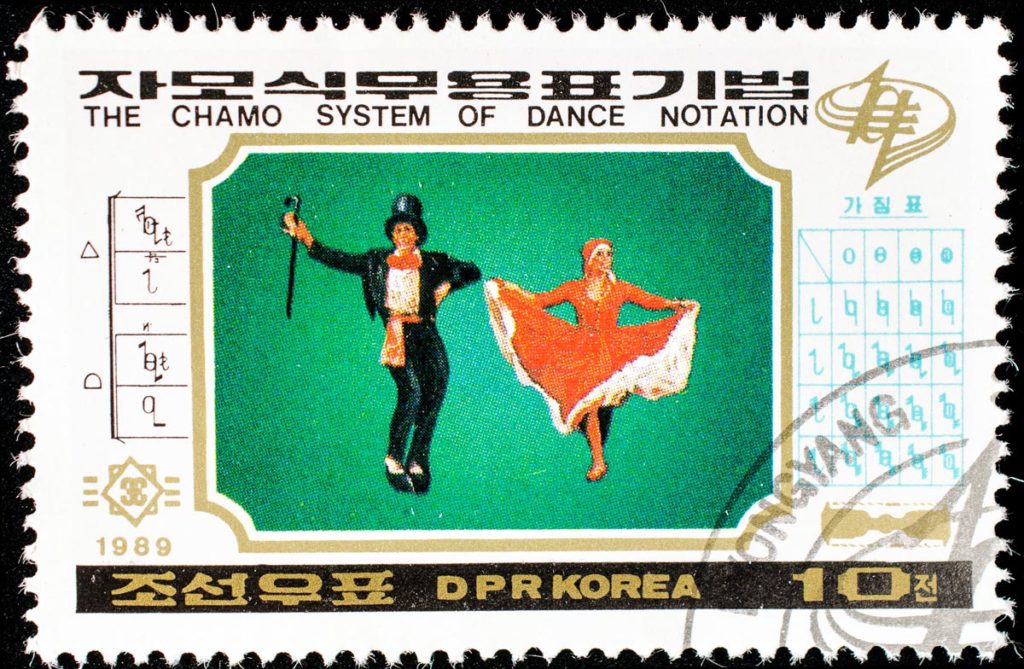North Korea stamps include those that the nation has issued since 1946. There are several very collectible postage stamps available from the Democratic People’s Republic of Korea, or DPRK. Prior to 1946, North Korea stamps collectibles include pieces used during the Japanese occupation.
Earliest stamps
Korea, then a single unified country, issued its own stamps from 1884. Featuring Chinese characters, and often the English phrase ‘COREAN POST’ (later ‘KOREA’ and ‘IMPERIAL KOREAN POST’), these stamps were used until 1910, when Japan began occupying Korea. Collectors may be able to find covers from or to places now in North Korea from this era using these national stamps.
Japanese occupation of Korea stamps
Although not specifically North Korean (such a state hadn’t been conceived of yet), in 1910 stamps were used by Japan. They were used on the Korean peninsula, which Japan occupied from 1910 until the end of World War II. These were regular Japanese stamps with an overprint reading 鮮朝. It was printed right-to-left on the stamps (朝鮮) and is the Japanese word for Korea. It is pronounced chōsen. There were 15 different stamps overprinted in this way, ranging from 5 rin to 1 yen.
More on MegaMinistore: North Korea Pin and Badge: “Dear Leader” Collectibles
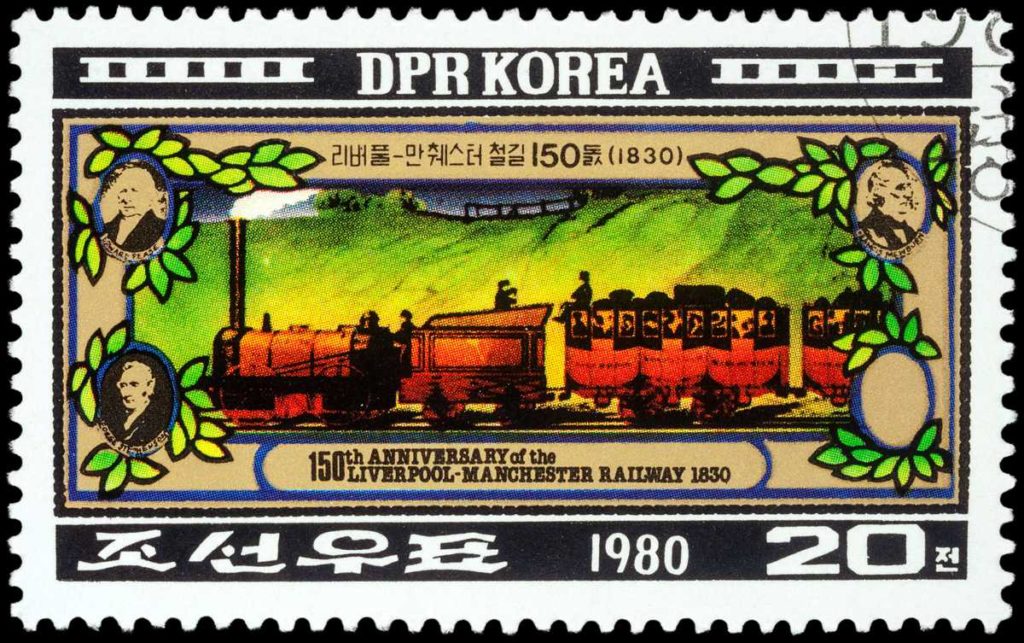
British train line commemorated on a collectible North Korea stamp from 1980.
1946: First North Korea stamps
In the turbulent and confusing years after World War II, Korea was split in the middle. Each half – the Soviet-supported north and the US-supported south – began issuing new postage stamps. These used Korean hangul script and often English script and/or Latin numerals.
More: Pakistan rare stamps for philatelists and other buyers
Some North Korea stamps show the chaos of the times. One early North Korean stamp from 1946 shows a young Kim Il-Sung, then a general, in front of a large flag now known as the South Korean flag. (The first North Korean flag appeared on a 1948 stamp).
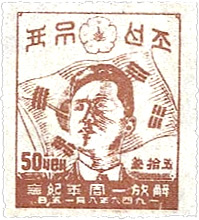
North Korean stamp from 1946 showing Kim Il-Sung in front of what became the South Korean flag. (KM #6)
See also: South Korea rare stamps for philatelists and other buyers
Common subjects for DPRK stamps quickly became established: workers, soldiers, struggle against imperial powers, domestic industry, Soviet friendship, Communism, and individual war heroes. Some DPRK stamps of this post-war period can be identified by their Korean characters: 조선우표, or “North Korean Post”.
1960s North Korea stamps
By the early 1960s, the strong North Korean economy was reflected in the large number of stamps being issued. Pride was felt in the country, its industry and culture, and its wildlife, all of which made frequent appearances on postage stamps. At times, the nationalistic propaganda, anger, and defiance on stamps reached new heights — as in 1969, when a stamp depicted Richard Nixon in a decidedly unflattering and anguished portrait, being jabbed by large fountain pens and bayonets (KM #909).
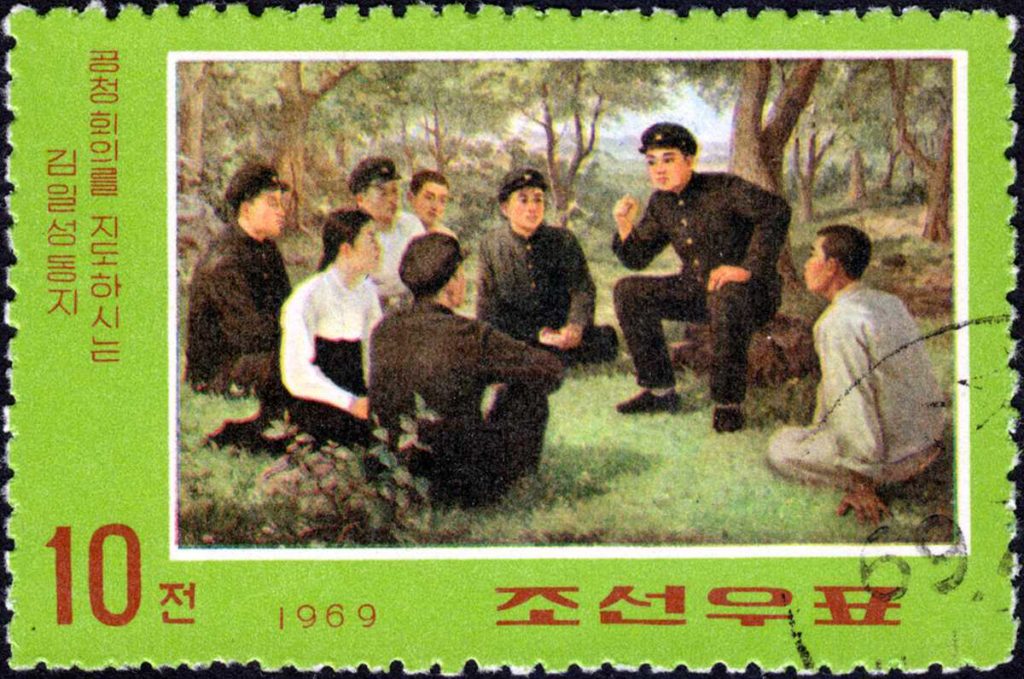
North Korea stamp showing Kim Il Sung holding forth in front of his rapt followers.
1970s North Korea stamps
In the 1970s, as the Communist sloganeering grew and shared stamp space with more conventional subjects such as Olympic games, animals, plants, local sports heroes, and notable DPRK buildings, collectibles such as souvenir sheets began being issued to attract money from international collectors. It was also around this time that the South Korean economy began to eclipse that of the North. English often appeared on stamps alongside Korean characters around this time as well — the name of the country was usually rendered as D.P.R. OF KOREA or something similar.
Browse 146 current North Korea stamps and postal collectibles for sale offers here
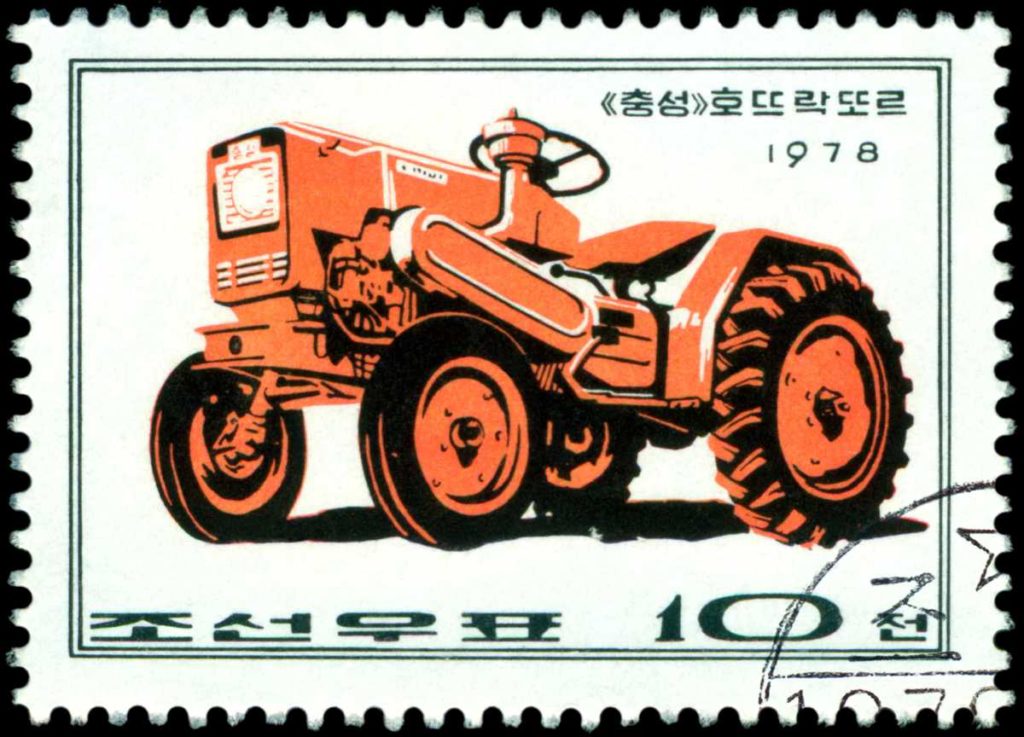
DPRK stamp with a tractor.
1980s North Korea stamps
By the 1980s, subjects on stamps had expanded to areas not related to North Korea in any way. For example there were Johannes Kepler and British royal weddings. Despite well-documented torture and murder by the military of anyone suspected of preaching or even practicing Christianity, paintings showing Mary and Jesus actually made it onto several North Korean stamps. Souvenir sheets and other special collectibles continued to be issued as well. As of the late 1980s, Kim Jong-Il, then son of the still-living leader Kim Il-Sung, was appearing more and more on postage stamps.
More on MegaMinistore: Taiwan stamps: Postal collectibles from Formosa
1990s North Korea stamps and beyond
Kim Il-Sung died in July 1994, and in October the DPRK issued its first stamps in memory of the departed and beloved leader. Several similar pieces have followed, often as lavishly decorated souvenir sheets, even during the dire famine years of 1994-1997. Kim Jong-Il never really inspired the devotion that his father did, and this is reflected in stamps from North Korea, which tend to glorify the father far more than the son. (In fact, when Kim Jong-Il was shown, it was often in a double portrait with his father.)
North Korean stamps in the Kim Jong-Un era continue to reflect the curious mix of Communist propaganda, all-encompassing nationalism, and hopeful entreaties to international stamp collectors (i.e., buyers) that became the norm in the last few decades. There is much to collect from the North Korean postage stamp world, and there are constantly new and interesting items for sale in online marketplaces.
